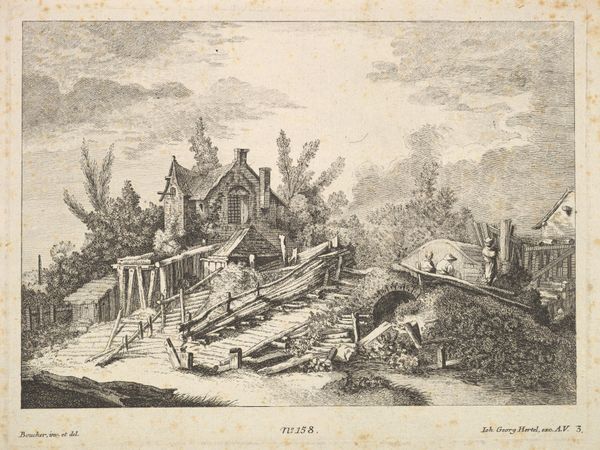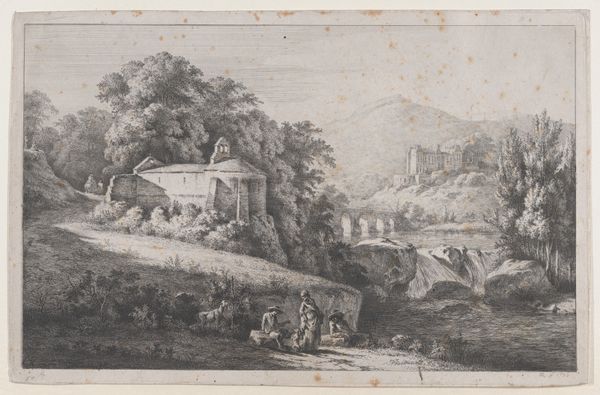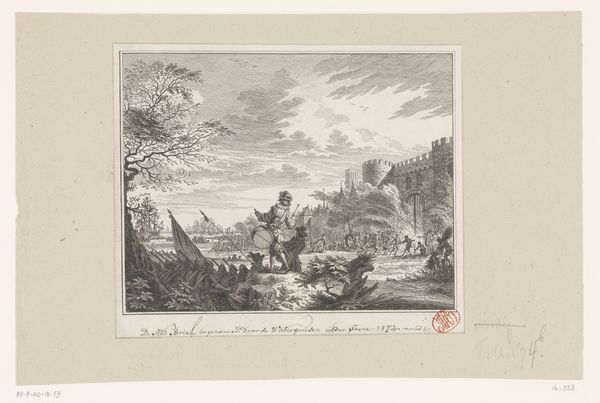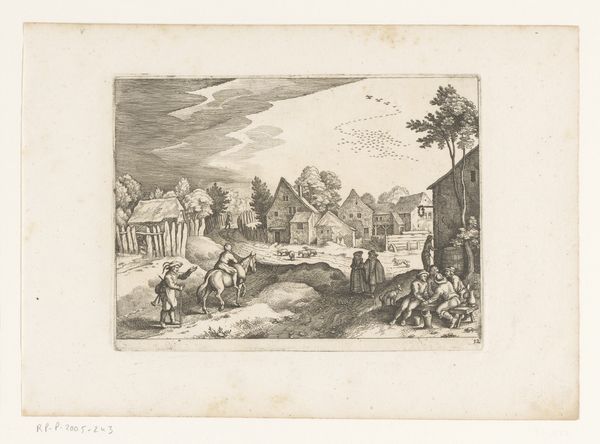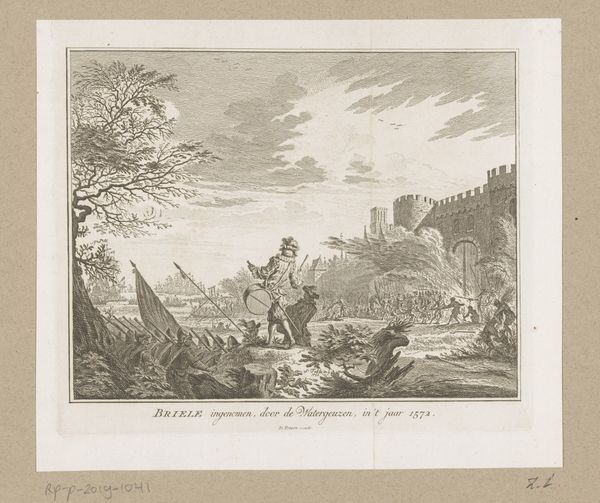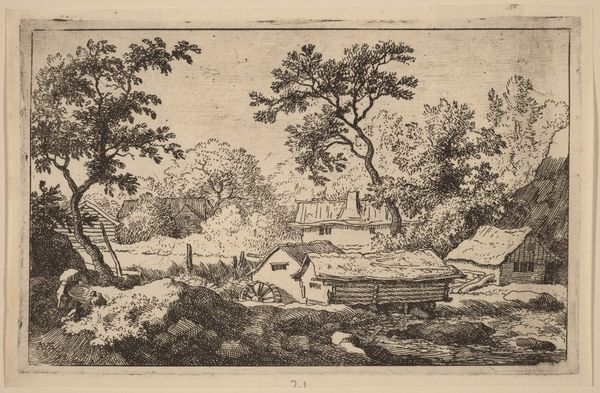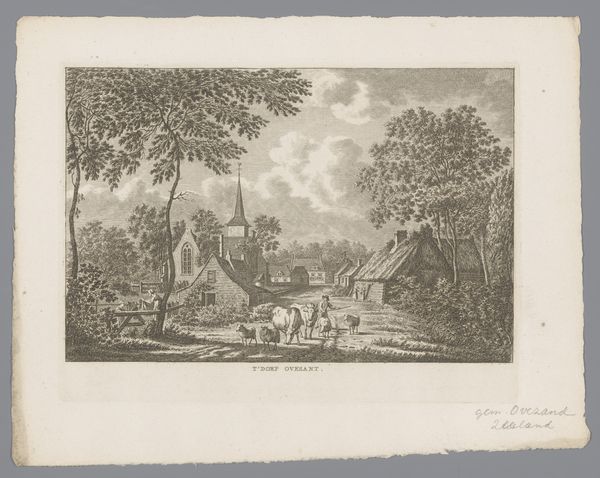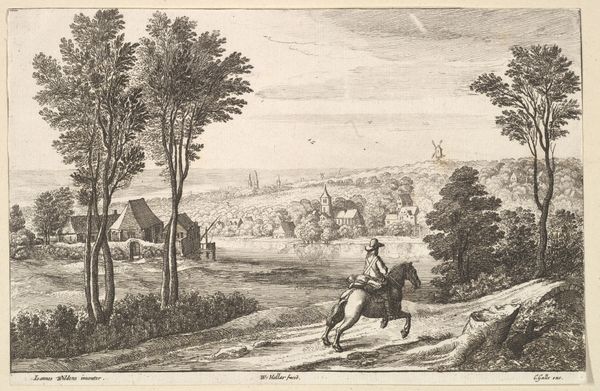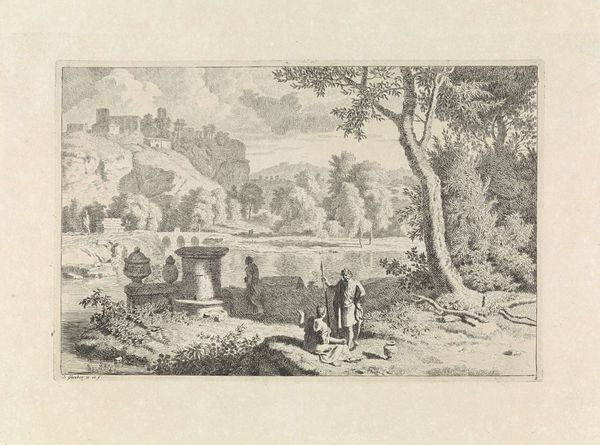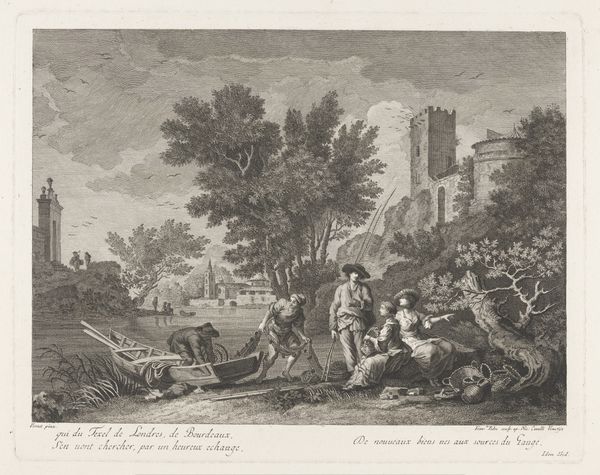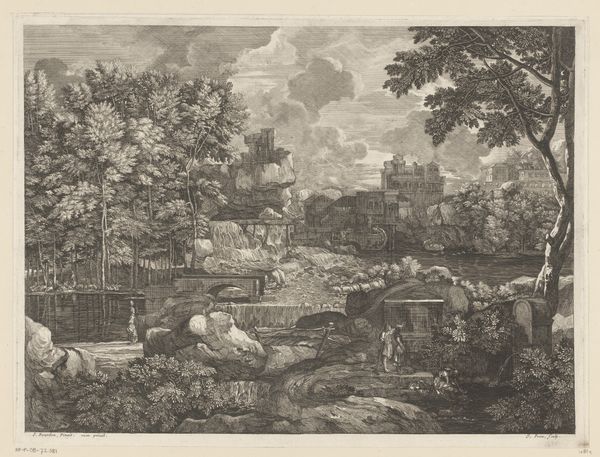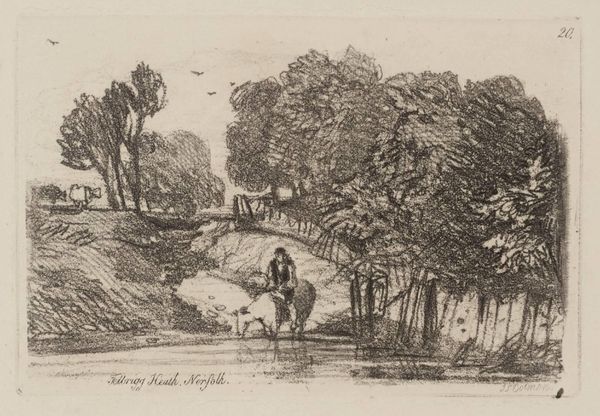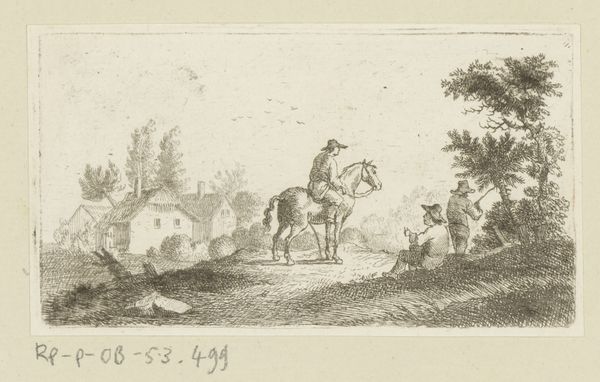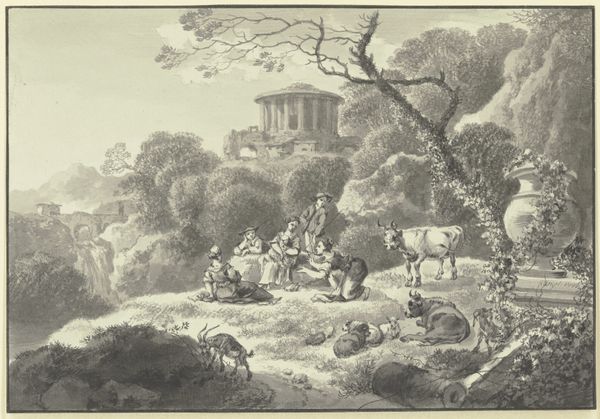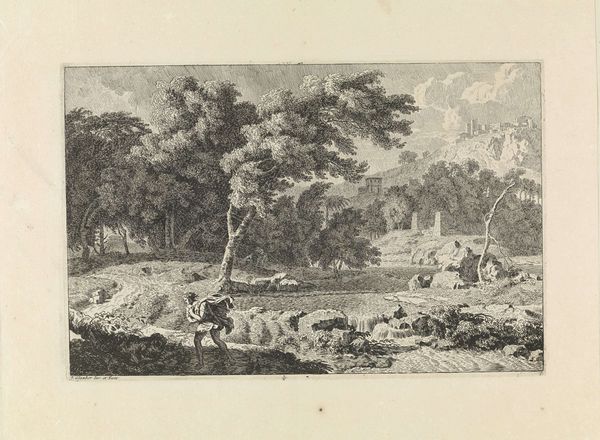
drawing, print, etching, paper
#
drawing
#
narrative-art
# print
#
etching
#
caricature
#
landscape
#
paper
#
romanticism
#
cityscape
#
genre-painting
#
history-painting
#
academic-art
Dimensions: 262 × 367 mm
Copyright: Public Domain
Editor: This is "Enraged Vicar, from Miseries of Human Life," a print and etching by Thomas Rowlandson, from around 1807. The vicar's, shall we say, expressive state really dominates the piece! He looks absolutely furious. What historical or social dynamics do you think Rowlandson is commenting on here? Curator: It's interesting to note how Rowlandson situates the vicar within a seemingly idyllic landscape, isn't it? Consider the social hierarchy of the time. Hunting was a pursuit of the gentry, often at the expense of common lands and the clergy, who relied on those lands. Do you think Rowlandson's critique is directed solely at the vicar’s rage or something broader? Editor: Perhaps the encroachment of aristocratic privilege on the church's domain, then? The way the hunters seem oblivious to the vicar’s anger definitely paints them as inconsiderate. Curator: Exactly! The humor derives from that societal friction. Think about the role of caricature in Georgian England—it served as a potent form of social commentary, often poking fun at authority and class distinctions. It was also very performative! Editor: So it’s not just a snapshot, but an active participation in the social discourse of the day. It seems to go beyond just documenting and reporting! Curator: Precisely. Rowlandson uses caricature to actively shape public perception and stir conversation about social norms. It is meant for popular consumption and political reform, in its own way. Editor: I hadn't considered the active role of art in fueling societal discourse like this. Now I see the Enraged Vicar as a powerful visual statement instead of only a funny one. Curator: Right. Looking at art through the lens of social history opens up fascinating avenues to interpretation.
Comments
No comments
Be the first to comment and join the conversation on the ultimate creative platform.
